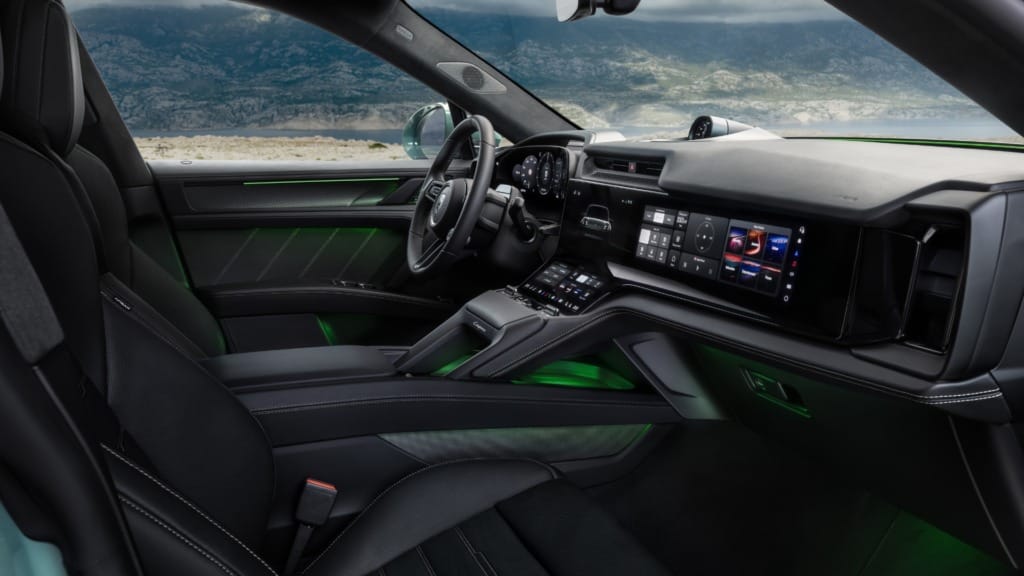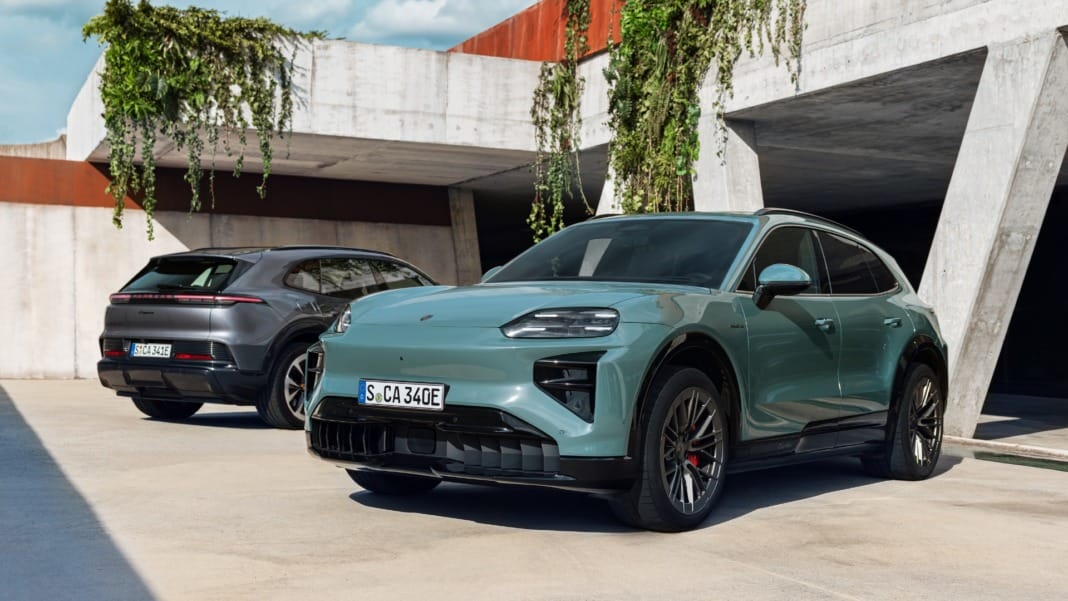Porsche has taken a major step in its electrification journey with the global debut of the all-electric Cayenne, marking a significant expansion of its SUV line-up. The new model arrives alongside the Cayenne Turbo Electric, offering two variants at launch as the brand moves towards a broader range of electric drivetrains. The company describes the new Cayenne as a milestone in performance, efficiency and everyday usability, bringing technologies developed in motorsport into a road-ready SUV.
Porsche says the electric Cayenne represents a new phase of the transformation that began with the Taycan. With electrified models accounting for about 36 per cent of its global sales in 2025, the brand states that the new SUV reinforces its commitment to offering a flexible mix of combustion-engined, hybrid and fully electric powertrains. Oliver Blume, Chairman of the Executive Board of Porsche AG, says the launch sets “new standards in the SUV segment” while balancing long-distance comfort with off-road capability.
High performance meets advanced energy management
The new Cayenne Electric family is built around two all-wheel-drive models, both featuring Porsche’s electronic Traction Management system. The Cayenne Turbo Electric is positioned as the flagship, producing up to 850 kW and 1,500 Nm with Launch Control. It accelerates from 0 to 100 km/h in 2.5 seconds and reaches a top speed of 260 km/h. A new rear-axle electric motor with direct oil cooling supports continuous power delivery, drawing inspiration from Porsche’s motorsport engineering. A Push-to-Pass function provides up to 130 kW of additional power for short bursts.
The standard Cayenne Electric delivers up to 300 kW in normal driving, rising to 325 kW and 835 Nm with Launch Control. It completes the 0 to 100 km/h sprint in 4.8 seconds and has a top speed of 230 km/h.
Both models feature energy recuperation at levels comparable to Formula E, achieving up to 600 kW during braking. In everyday driving, Porsche says approximately 97 per cent of braking operations are handled by the electric motors alone, reducing reliance on the mechanical braking system. The Cayenne Turbo Electric can also be equipped with Porsche Ceramic Composite Brakes for enhanced stopping power.
An adaptive air suspension with Porsche Active Suspension Management is fitted as standard, and the Turbo model adds Porsche Torque Vectoring Plus for improved traction. Rear-axle steering is available as an option. Porsche Active Ride, introduced for the first time in a Cayenne, helps minimise body movements to improve comfort and stability.
The vehicle is powered by a new 113 kWh high-voltage battery, offering up to 642 km of WLTP range in the standard model and up to 623 km in the Turbo. Charging performance reaches up to 390 kW under typical conditions, and up to 400 kW in specific scenarios. Porsche states that the battery can charge from 10 to 80 per cent in under 16 minutes, while a 10-minute charge can add more than 300 km of driving range. The model is also Porsche’s first to support optional inductive charging at up to 11 kW.
Evolved design and expanded interior space
The Cayenne Electric introduces updated exterior styling while retaining the silhouette that has defined the model since its first generation in 2002. Porsche has lowered the bonnet and introduced slim Matrix LED headlights in a single lighting module. Frameless doors, sculpted surfaces and a distinctive rear light strip with animated graphics define the vehicle’s new look. The Cayenne Turbo Electric features unique elements in Turbonite, a finish applied to alloy wheel faces, badging and window trims.

A drag coefficient of 0.25 places the Cayenne Electric among the most aerodynamic SUVs in its class. Porsche Active Aerodynamics manages movable elements such as cooling air flaps, an adaptive roof spoiler and active aeroblades on the Turbo model to improve efficiency and stability at speed.
At 4,985 mm long, the electric Cayenne is 55 mm longer than its combustion-engined counterpart. A wheelbase increase of nearly 13 cm offers more rear legroom, and luggage capacity ranges from 781 to 1,588 litres, supplemented by a 90-litre front compartment. The SUV supports towing of up to 3.5 tonnes, depending on configuration.
Inside, customers can select from 13 exterior colours, nine wheel designs, 12 interior combinations and multiple packages. A range of customisation options is available through Porsche Exclusive Manufaktur, Paint to Sample and the Sonderwunsch programme. New comfort features include Mood Modes, which adjust seating, lighting and sound settings, as well as a panoramic roof with variable light control and expanded ambient lighting.
New digital experience and future strategy
Porsche has introduced its new Driver Experience interface in the Cayenne Electric. A curved OLED Flow Display sits at the centre of the dashboard, supported by a 14.25-inch digital instrument cluster and an optional 14.9-inch passenger display. A head-up display with AR technology projects virtual elements as if they were on an 87-inch screen positioned ahead of the vehicle. Physical controls remain for core functions such as climate and audio.
The new Porsche Digital Interaction system expands customisation and accessibility through widgets, display themes and a growing catalogue of third-party apps. Streaming, gaming and an AI-enhanced Voice Pilot are part of the updated experience. Digital keys can be stored on smartphones and smartwatches and shared with up to seven users.
Porsche confirms that the electric Cayenne will sit alongside combustion and hybrid variants well into the next decade. Matthias Becker, Member of the Board of Management for Sales and Marketing, says customers will continue to have a choice of powertrains in every segment Porsche serves.
The electric Cayenne models are now available to order in Singapore. The Cayenne Electric starts at S$372,788 without COE, and the Cayenne Turbo Electric starts at S$668,288 without COE, inclusive of taxes and standard warranty and maintenance packages.





